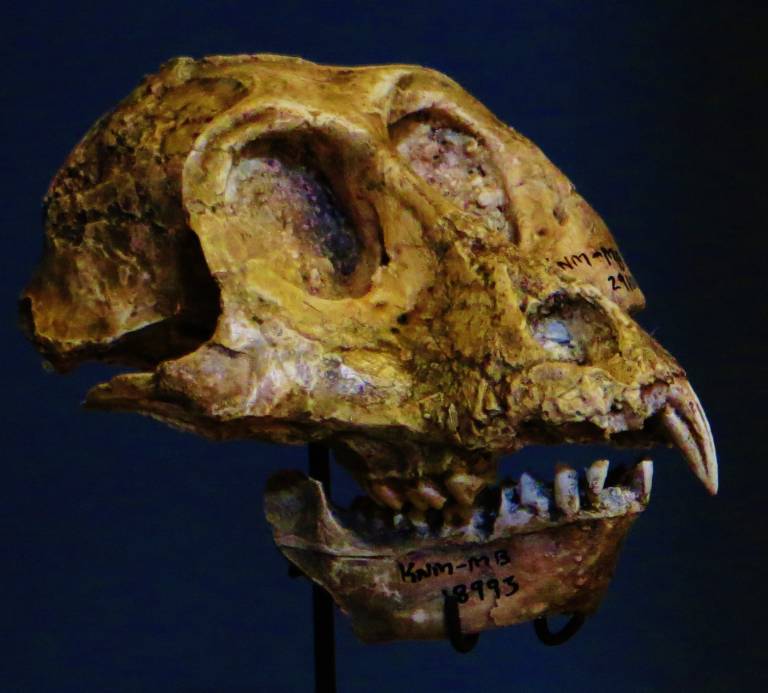Implications of outgroup selection in the phylogenetic inference of hominoids and fossil hominins
30 September 2023
Understanding the phylogenetic relationships among hominins and other hominoid species is critical to the study of human origins.

Understanding the phylogenetic relationships among hominins and other hominoid species is critical to the study of human origins. However, phylogenetic inferences are dependent on both the character data and taxon sampling used. Previous studies of hominin phylogenetics have used Papio and Colobus as outgroups in their analyses; however, these extant monkeys possess many derived traits that may confound the polarities of morphological changes among living apes and hominins. Here, we consider Victoriapithecus and Ekembo as more suitable outgroups. Both Victoriapithecus and Ekembo are anatomically well known and are widely accepted as morphologically primitive stem cercopithecoid and hominoid taxa, respectively, making them more appropriate for inferring polarity for later-occurring hominoid- and hominin-focused analyses. Craniodental characters for both taxa were scored and then added to a previously published matrix of fossil hominin and extant hominoid taxa, replacing outgroups Papio and Colobus over a series of iterative analyses using both parsimony and Bayesian inference methods. Neither the addition nor replacement of outgroup taxa changed tree topology in any analysis. Importantly, however, bootstrap support values and posterior probabilities for nodes supporting their relationships generally increased compared to previous analyses. These increases were the highest at extant hominoid and basal hominin nodes, recovering the molecular ape phylogeny with considerably higher support and strengthening the inferred relationships among basal hominins. Interestingly, however, the inclusion of both extant and fossil outgroups reduced support for the crown hominid node. Our findings suggest that, in addition to improving character polarity estimation, including fossil outgroups generally strengthens confidence in relationships among extant hominoid and basal hominins.
Implications of outgroup selection in the phylogenetic inference of hominoids and fossil hominins
Nicholas W. Post, Christopher C. Gilbert, Kelsey D. Pugh, Carrie S. Mongle
 Close
Close

